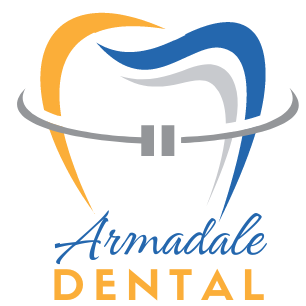Pericoronitis is a dental condition that can cause significant discomfort and pain. It typically occurs when the wisdom teeth, also known as third molars, partially erupt through the gums and become trapped beneath the gum tissue. This trapped position makes it difficult to clean the area properly, leading to the accumulation of bacteria and debris, which can result in inflammation and infection of the surrounding tissues. Pericoronitis can manifest as localized swelling, redness, pain, and even the development of an abscess in the affected area. Prompt diagnosis and treatment are essential to alleviate symptoms and prevent complications.
Here’s a list of how the dental service procedure for pericoronitis works:
- Diagnosis: The dentist will conduct a thorough examination of the affected area, often using X-rays to assess the position of the wisdom tooth and the extent of tissue involvement.
- Pain Management: The first step is to provide pain relief to the patient through medication, which may include over-the-counter pain relievers or prescribed analgesics.
- Antibiotics: If there is an active infection, antibiotics may be prescribed to combat the bacteria causing the pericoronitis.
- Irrigation and Cleaning: The dentist will gently clean the area, removing any debris or food particles trapped around the tooth. This process may involve irrigation to flush out infection and waste.
- Drainage: In cases where an abscess has formed, the dentist may need to drain the pus to relieve pressure and discomfort.
- Tooth Extraction: In some cases, if the wisdom tooth is the root cause of recurrent pericoronitis or is impacted and causing continuous problems, the dentist may recommend extracting the tooth.
- Follow-Up Care: Patients will receive instructions on how to care for the treated area at home, which may include rinsing with warm salt water and maintaining good oral hygiene.
- Monitoring: The dentist will schedule follow-up appointments to monitor the healing process and ensure no complications.
- Prevention: Patients may receive advice on maintaining proper oral hygiene and the importance of regular dental check-ups to prevent future occurrences of pericoronitis.
By following these steps, dental professionals can effectively manage and treat pericoronitis, helping patients find relief from the painful symptoms and preventing further complications.

Is it always necessary to extract a wisdom tooth when treating pericoronitis?
No, it is not always necessary to extract a wisdom tooth when treating pericoronitis. The decision to extract the wisdom tooth depends on various factors, including the severity and frequency of pericoronitis episodes, the position and orientation of the wisdom tooth, and the patient’s overall oral health. In some cases, especially if the wisdom tooth can erupt fully without causing further issues or if the pericoronitis is a one-time occurrence, conservative treatments such as antibiotics, cleaning, and proper oral hygiene may be sufficient to resolve the problem. However, if the pericoronitis is recurrent or the wisdom tooth is impacted and causing persistent problems, extraction may be recommended to prevent future episodes and maintain oral health. It is crucial to consult with a dentist who can evaluate the specific circumstances and provide the most appropriate treatment plan.
